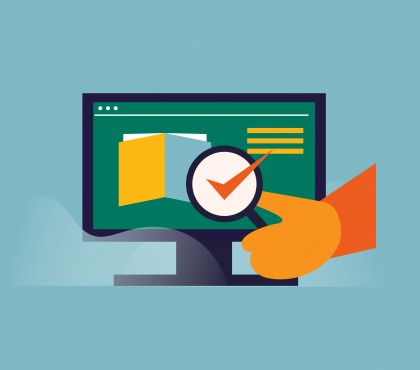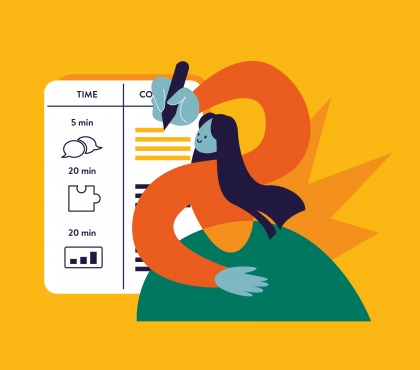Organizing training materials can be stressful and messy if L&D managers can’t handle the basic techniques. The inability to manage organizing training contents may lead to difficulties for employees to understand new information. But don’t worry, this guide about how to organize training materials will ease your burden.
How Does Organizing Training Content Benefit You And Your Employees?
- For employees:
Organized employee training materials are much easier to follow and memorize for employees. It can save employers’ and employees’ training time before applying new knowledge. Remember: time is money! Moreover, systemized content allows employees to understand how the main concepts are related.
- For L&D managers:
The learning materials are a guide for the L&D managers and learners; therefore, training is more effective as information is chunked and put into proper order. Once the training materials, L&D managers can flexibly and efficiently achieve course objectives as desired.
How to Organize Training Materials: 5 Methods You Should Follow
So how to organize learning content? Two main approaches are most applied to organize corporate training materials: sequential and non-sequential. Let’s find out their strengths and how to bring them to real life.
Sequential
- What?
Sequential methods focus on how the training material is presented and learned. Information is presented in a list, or information is presented as though a solution follows a problem. With these methods, employees get to know step by step, following information in order.
- How?
Here comes the exciting part! We have summed up the four most applicable ways to apply sequential methods for you to organize training materials. Besides, we also include tips to spice up your classes.

1. Listing or Describing
Listing or describing is the most simple way to organize training materials and simplify them logically. You can describe any topic or technical term by listing its features, characteristics, or examples. The information lists can be in either sequence or not. An example of this method is showing a recipe for someone to cook a dish. The ingredients don’t have to be in order, but the listed steps should be in sequence for the cooker to follow.
The strength of this method is that it gives employees clear instructions to remember processes or tasks that should be taken. It is suitable for explaining procedures and introducing new technical terms and definitions. You can also utilize multimedia to make the content more engaging. Additionally, combining this method with eLearning localisation services ensures the materials are tailored to diverse audiences, enhancing accessibility and relevance. Below is an example of how animation simplifies abstract concepts of a leadership training course and makes them easier to grasp:
2. Solution to Problem
To ace this method, you simply show the problems and solutions to address them. When L&D managers organize training materials using this method, learners can understand how to apply the theories in practical situations. This method has your back if you are trying to demonstrate steps or educate your employees on how to react to a specific situation.
Of course, multimedia, especially animation, is always there for you. With lively illustration and expressive sound effects, employees get to memorize the solutions and how to apply them easier, even if they are in emergency cases. This approach is particularly effective for service skills eLearning, where employees need to quickly grasp how to handle real-life customer interactions or challenging scenarios.
3. Easy to Difficult
One of the best ways to train employees is to lead them slowly and provide them with simple information before introducing complex information. When L&D managers organize training materials starting with the most basic knowledge, learners have more time to get acquainted with new information and upgrade their understanding by accessing more complex concepts. For L&D managers looking for a method to deliver advanced content, this method helps to avoid overwhelming students with new complex information.
L&D managers can incorporate self-check assessments and branching activities for learners to assess what they have learned. These activities allow employees to ensure they have no misunderstanding before approaching other content.
4. Familiar to Unfamiliar
Starting with familiar basic information and moving on to new, unfamiliar concepts when you organize training materials is also an excellent way to go. The method contains similes, comparisons, metaphors, and other techniques to teach new information as it is easier to link between concepts. The relatability with the new concept enhances the learning experience and willingness to learn as employees absorb new views based on their knowledge.
This method is friendly to any type of content, regardless of employees’ level, as the whole lesson is built based on one common knowledge for everyone. It’s particularly effective when applied to eLearning social media services, where employees can build on familiar platforms or trends before diving into advanced strategies. Self-assessments and games are your good friend regarding Familiar-to-Unfamiliar methods as they create lighter and fun moods.
Non-Sequential
This method introduces content and objectives without building on one another, and the order in which the student navigates the course doesn’t matter. It is helpful for self-led classes, where learners have the freedom to navigate the course as needed. The flexibility of this method is the strength that L&D managers should consider if they have to prepare for e-learning courses.
Conclusion
Congratulations! You have explored the most practical and essential ways to organize training materials. We hope these methods will assist you in creating exciting and engaging courses for your employees. Now, it’s time to start the ball rolling!
Read more:







